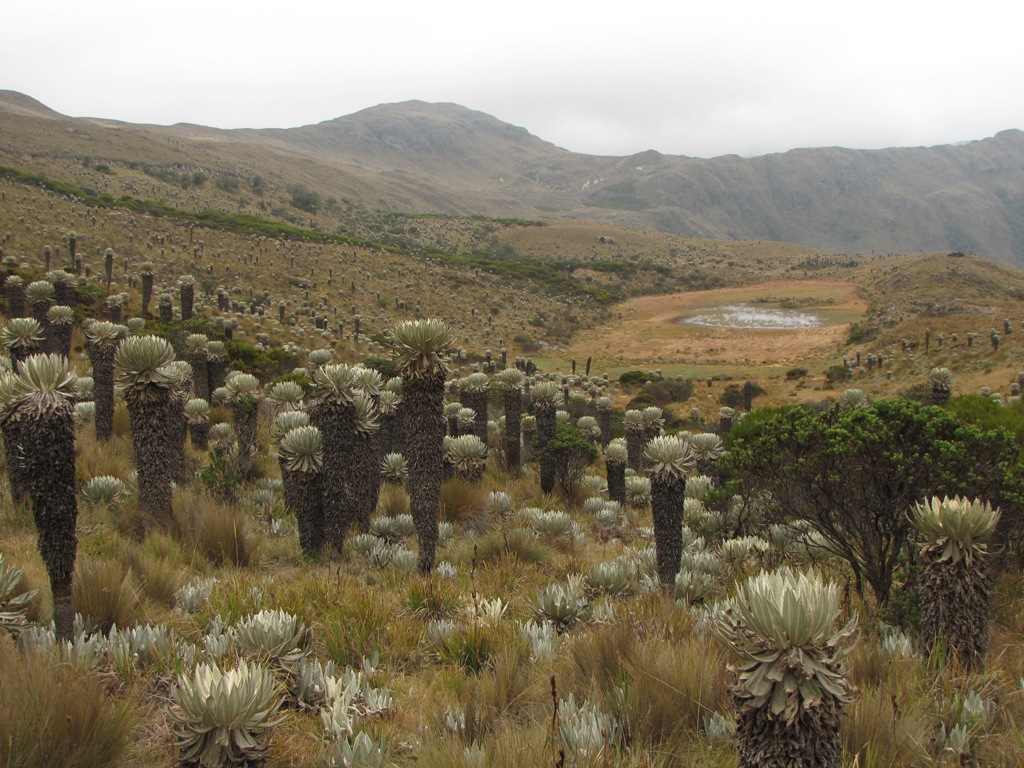 The Model for Assessing Habitat Vulnerability to Climate Change in the Tropical Andes provides a means of assessing the vulnerability of habitats and other ecological units to the effects of climate change in Colombia, Ecuador, Peru, and Bolivia. Using the Model, you apply readily available information about a habitat’s sensitivity, resilience, exposure to climate change, non-climate stressors, and other factors to predict whether it will likely suffer range contraction or degradation due to climate change.
The Model for Assessing Habitat Vulnerability to Climate Change in the Tropical Andes provides a means of assessing the vulnerability of habitats and other ecological units to the effects of climate change in Colombia, Ecuador, Peru, and Bolivia. Using the Model, you apply readily available information about a habitat’s sensitivity, resilience, exposure to climate change, non-climate stressors, and other factors to predict whether it will likely suffer range contraction or degradation due to climate change.
Download the Model for Assessing Habitat Vulnerability to Climate Change in the Tropical Andes.
Land-management and natural-resource professionals increasingly need to understand how climate stressors will impact the habitats that they are tasked to conserve. Until now, there have been few standardized, easy-to-use models that allow this kind of analysis.
The Model for Assessing Habitat Vulnerability to Climate Change in the Tropical Andes translates research findings into useful guidelines that enable practitioners and policy-makers to identify emerging and anticipated threats to biodiversity. The tool also supports regional approaches and broader contexts thanks to its reliance on standardized data that extends across national boundaries. By enabling those responsible for managing lands to assess habitat vulnerability the Model can help prioritize management strategies for climate change adaptation and develop actions that increase the resilience of habitats to climate change.
The Model for Assessing Habitat Vulnerability to Climate Change in the Tropical Andes was written in Spanish to facilitate its use by scientists and natural resource managers from the Andean countries.
The Model for Assessing Habitat Vulnerability to Climate Change in the Tropical Andes provides a rapid, cost-effective means of estimating a habitat’s relative vulnerability to climate change. It combines readily accessible information on the natural history, distribution, and management with downscaled climate predictions available from NatureServe (see below). The Model can be used for any habitat occurring in megadiverse Andean countries of Colombia, Ecuador, Peru, or Bolivia.
Results fall into one of five categories:
- Extremely Vulnerable
- Highly Vulnerable
- Less Vulnerable
- Not Vulnerable
- Insufficient Evidence
Resource managers, planners, and conservationists can use the Index to:
- Conduct rapid assessments of the relative vulnerability of any habitat to climate change
- Highlight habitats that warrant more in-depth study and research
- Point to factors that may cause the distribution of a habitat to expand or retreat
- Serve as a proxy for the vulnerability of multiple species occurring in a particular habitat
- Promote transparency, consistency, and efficiency of planning and managing for climate adaptation
- Identify data gaps and research needs
Climate Data Needed for Model
Projected Mean Annual Temperature, 2050s, A1b scenario, Tropical Andes (17 MB .img file, for opening as a grid in a GIS program)
Projected Climate Moisture Deficit, 2050s, A1b scenario, Tropical Andes (3MB .img file, for opening as a grid in a GIS program)